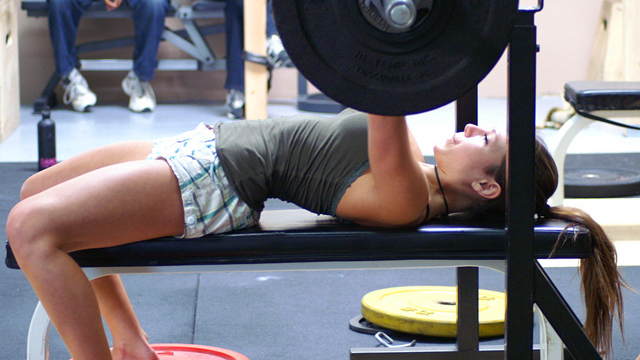Employing this one change in how you perform your resistance training programme will produce superior results and minimise your risk of injury. That’s why I consider it the most important rule of resistance training.

What do you think it is?
1) Stretching before or after the session?
2) Warming up on a treadmill before you train?
3) Wearing blue socks that pull up to just under the knee?
If it was the socks I would love it and this would be a shorter post but it’s not unfortunately. Contrary to popular belief neither is it any of the others.
It’s this, never let an external force (weight machine, barbell) take you into a position you can’t achieve by yourself.
So what does that mean?
Let’s look at a specific example to illustrate the point.
The bench or chest press is an exercise where this happens a lot. Not least because many exercise professionals will insist that the bar comes down to your chest.
Those are the ‘rules of the exercise’ but what about the rules of you? These are far more important in terms of your results and your safety.

How to test this yourself.
To decide exactly what those rules are on any given day, assess your active range of motion before you start the exercise.
On the bench press or chest press, the critical measurement is how far your elbows can go back.
To test this lay on a bench with a broom stick or similar in your hands. Slowly lower the stick towards your chest with precisely the same width grip you would use on the bar. Where does it stop?
That’s as far as the bar should go during the exercise.
Now you can certainly try to improve this range by working on the muscles that are responsible for retraction and shoulder (glenohumeral) horizontal abduction. Particularly if you find one side is more limited than the other.
I find isometrics (muscle contractions without movement) at precisely the angle of shoulder abduction you are using to press very effective for this.
Gently push the elbow of your limited shoulder back into a solid object for 6 x 6 secs to improve this range and enable the bar to come deeper under muscular control.
The potential consequences of ignoring this advice are twofold.
Firstly you are risking the health of your glenohumeral joint for no added benefit.
You will likely find a limit in range of motion on the shoulder you usually have problems with when pressing. Breaching your active range of motion is one of the likely causes of this and certainly won’t improve it.
Think about it, what is the point of allowing a weight to take you into a position you can neither contract into or adequately contract out of?
You’re merely stressing the intrinsic structures of the joint rather than your actual target, the muscular system.
Secondly, your results will suffer.
You have a much greater chance of negatively influencing the ability of your muscles to produce force when you either stretch them beyond their capacity, or compress them further than they can shorten.
Your central nervous system’s (CNS) response to this is usually to inhibit the affected tissue.
This has the potential to set you up for further issues down the line.
This advice can be applied to every resistance training exercise you perform to safeguard joint health and improve your results.